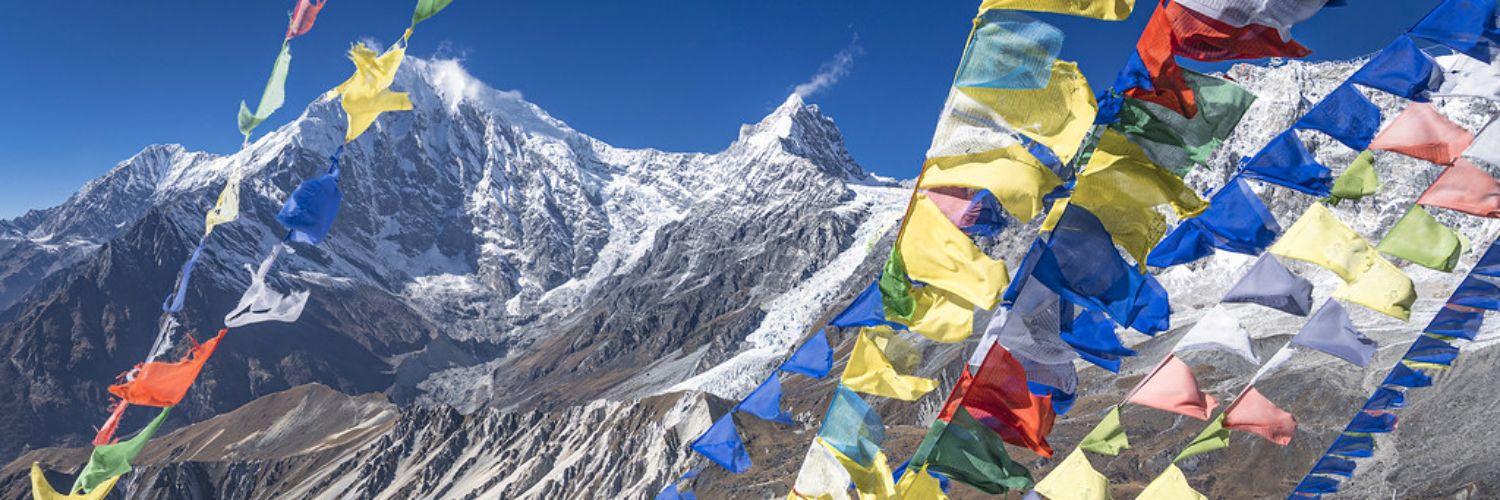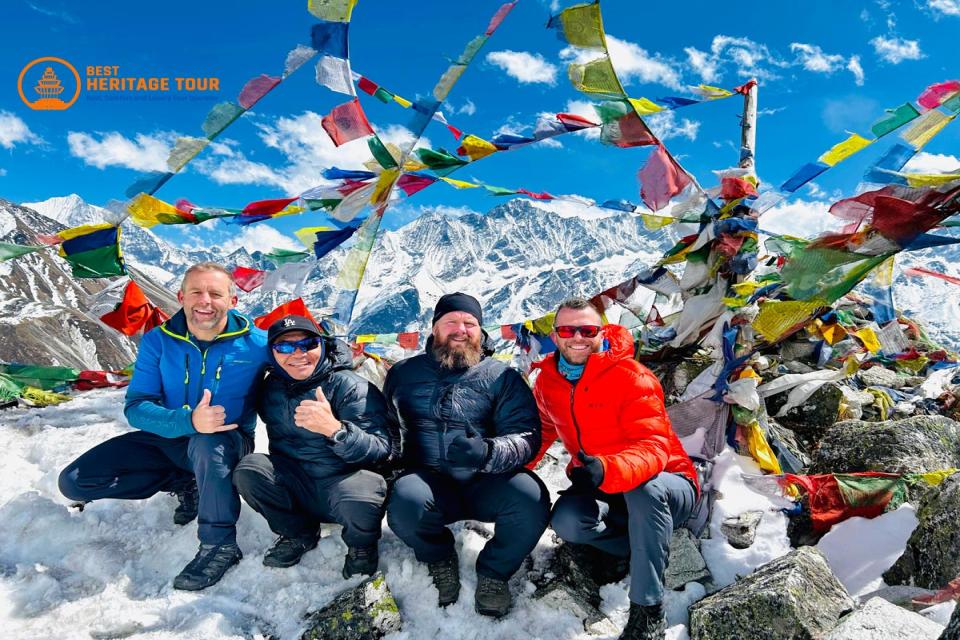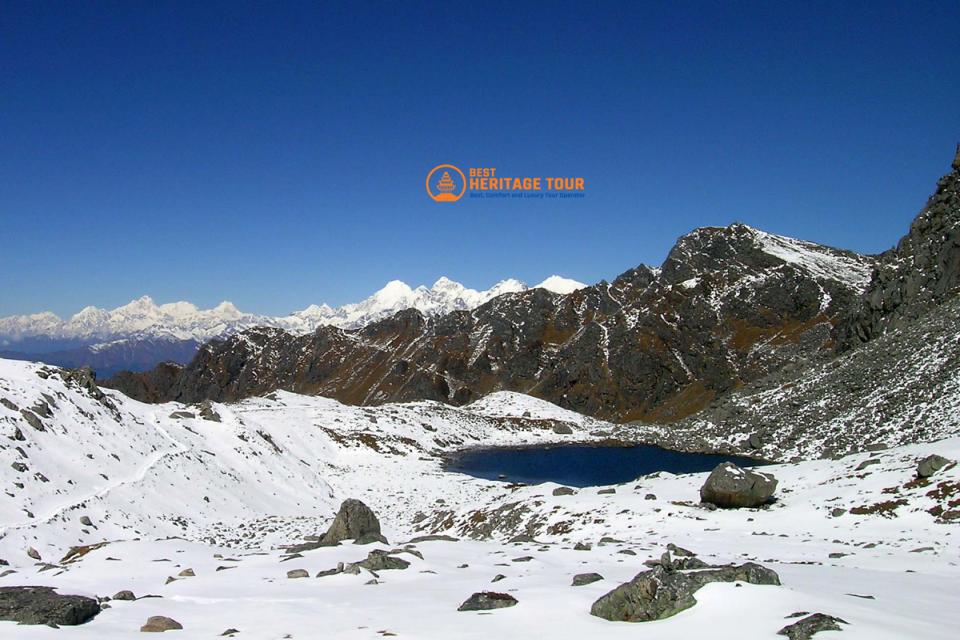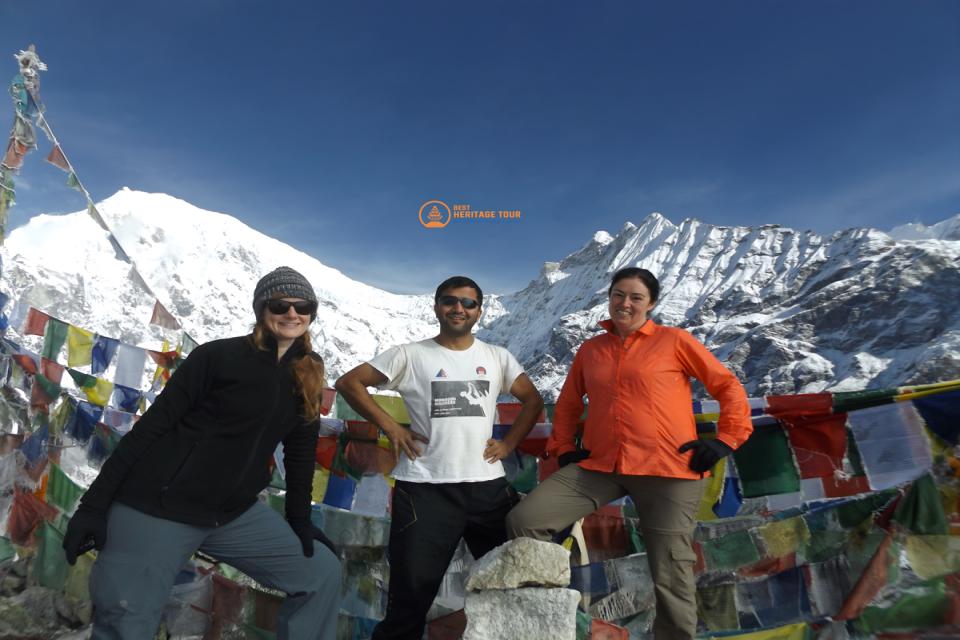The Langtang Valley is one of Nepal’s most serene and picturesque trekking destinations. Nestled in the shadow of the Langtang Himalayas, it offers snow-capped peaks, alpine forests, glacial lakes, and rich cultural experiences. Two of its most celebrated viewpoints, Kyanjin Ri and Tserko Ri, draw trekkers eager for panoramic vistas of the Himalayan panorama.
Trekking during New Year adds a unique charm. Imagine stepping into the mountains at the turn of the year, breathing crisp winter air, and standing atop Kyanjin Ri or Tserko Ri to welcome a fresh start with 360-degree views of Himalayan giants. However, winter trekking in Nepal requires careful planning - especially in terms of accessibility, weather conditions, and safety.
This guide focuses entirely on how to access Kyanjin Ri and Tserko Ri during New Year, what challenges to expect, and how to maximize your trekking experience while staying safe and comfortable.
Understanding Kyanjin Ri and Tserko Ri - Highlights and Significance
Kyanjin Ri
Kyanjin Ri stands at approximately 4,773 meters above sea level. It is the highest accessible peak near Kyanjin Gompa, the main settlement in the upper Langtang Valley. A moderate climb from Kyanjin Gompa, Kyanjin Ri provides:
-
Panoramic views of Langtang Lirung (7,234m) and surrounding peaks
-
Glacial valleys and snowy ridgelines in winter
-
A sense of accomplishment without the technical demands of higher Himalayan summits
Tserko Ri
Tserko Ri, slightly higher at 5,033 meters, offers a different perspective of the Langtang region. The trek to its summit is longer and more challenging than Kyanjin Ri but rewards trekkers with:
-
Breathtaking views of the Langtang range, Gosaikunda region, and even Ganesh Himal in clear weather
-
A sense of solitude, especially during the quieter New Year period
-
Perfect sunrise and sunset viewpoints for photography enthusiasts
Both peaks are highly accessible from Kyanjin Gompa, but winter conditions during New Year require preparation, proper gear, and guidance.
Seasonal Access: Why New Year is Unique for Trekking
Trekking during New Year (late December to early January) is unique because:
-
The trails are quieter, offering a peaceful, private trekking experience
-
Snow often blankets the valley, creating postcard-perfect winter landscapes
-
Cold but stable weather is common due to winter high-pressure systems
However, limited daylight and icy trails require trekkers to plan their hikes carefully, carry proper winter gear, and consider local guidance. Despite the challenges, New Year trekking offers a magical Himalayan experience unmatched by other seasons.
Weather Conditions in Langtang Valley During New Year
Understanding the weather is crucial to plan a safe ascent to Kyanjin Ri and Tserko Ri.
Temperature Overview
During New Year, temperatures vary by altitude:
-
Lower Langtang Valley (e.g., Lama Hotel, 2,300m): 0°C to 10°C during the day, dropping below -5°C at night
-
Kyanjin Gompa (3,870m): Daytime temperatures range from -5°C to 5°C; nights can reach -15°C
-
Summits (Kyanjin Ri 4,773m; Tserko Ri 5,033m): Daytime temperatures around -10°C to -5°C; night temps can plunge to -20°C
Snowfall and Trail Conditions
Snowfall is common but generally light in early winter. Heavy snow can occasionally cover trails, creating:
-
Icy steps on rocky sections
-
Slippery and uneven ground on ridge paths
-
Beautiful white landscapes that make trekking highly scenic
Daylight Hours and Visibility
-
Shorter days mean sunrise around 6:45 AM and sunset around 5:15 PM, giving roughly 10 hours of daylight
-
Morning treks are recommended for summit attempts to ensure maximum visibility and reduce risks of icy trails
Accessibility of Kyanjin Ri
Trail Difficulty During Winter
The trek to Kyanjin Ri from Kyanjin Gompa is:
-
Distance: Approximately 5-6 km round trip
-
Time: 3-5 hours depending on pace and weather
-
Gradient: Moderate; well-defined trail but can be slippery with snow or frost
Kyanjin Ri is considered achievable for fit trekkers, even during winter, but trekking poles and sturdy boots are strongly recommended.
Safety Precautions and Equipment Needed
For winter access:
-
Footwear: Insulated, waterproof trekking boots with good traction
-
Clothing: Layered clothing, thermal wear, down jacket, gloves, and hat
-
Other essentials: Sunglasses, sunscreen, and trekking poles
Best Time of Day to Attempt the Summit
-
Start early (7-8 AM) to avoid icy trails and allow time for return before sunset
-
Afternoon sun can soften icy paths, but late afternoons may bring stronger winds and shadows
Accessibility of Tserko Ri
Trekking Challenges During New Year
Tserko Ri is more demanding than Kyanjin Ri due to:
-
Longer ascent (~6-7 km round trip)
-
Steeper gradient in final sections
-
Snow and wind exposure at higher altitudes
Although non-technical, trekkers must take extra caution with footing, especially in icy or snowy conditions.
Scenic Rewards from the Summit
-
Panoramic views of Langtang Lirung, Langshisha Ri, and surrounding glacial valleys
-
Chance to capture sunrise over Langtang Himal if you start early
-
Peaceful winter environment with fewer trekkers, providing a private experience for reflection and photography
Tips for a Safe and Enjoyable Hike
-
Acclimatize at Kyanjin Gompa for at least one day before attempting Tserko Ri
-
Begin early and allow extra time for photo stops and rest
-
Travel with a guide for safe navigation on icy or snowy trails
-
Carry enough water and energy snacks
Accommodation Options in Kyanjin Gompa During Winter
Kyanjin Gompa offers a range of tea houses and lodges that remain open during New Year:
-
Standard tea houses: Cozy rooms with shared bathrooms; warm meals included
-
Deluxe tea houses: Private rooms, sometimes with attached bathrooms or hot showers
-
Tips: Book in advance to secure a double room or private lodge stay, especially for couples or small groups
Staying in Kyanjin Gompa allows early summit attempts for both Kyanjin Ri and Tserko Ri while enjoying warm food and a comfortable bed.
Cultural and Local Experiences During New Year in Langtang
New Year in Langtang is special because:
-
Local monasteries and gompas often host small prayer rituals or festivals
-
The village is quiet but welcoming, offering insights into Tibetan-influenced Sherpa culture
-
Trekkers can try traditional dishes such as thukpa (noodle soup) and tsampa (roasted barley)
-
Interaction with local herders and monks adds a unique cultural dimension to your winter trekking experience
This combination of nature and culture makes Langtang trekking during New Year a memorable adventure.
Fitness and Preparation Tips for Winter Trekkers
For safe access to Kyanjin Ri and Tserko Ri during New Year:
-
Physical fitness: Moderate hiking experience with endurance for 4-6 hours uphill
-
Acclimatization: Spend at least one day at Kyanjin Gompa before ascending
-
Gear preparation: Layered clothing, trekking poles, crampons for icy conditions
-
Hydration: Winter air is dry; drink plenty of water to avoid altitude dehydration
-
Guided support: Local guides help identify hazards, trail changes, and weather updates
Being well-prepared enhances both safety and enjoyment during the high-altitude winter trek.
Conclusion - Plan Your New Year Trek to Kyanjin Ri & Tserko Ri
Access to Kyanjin Ri and Tserko Ri during New Year is absolutely feasible with preparation, proper gear, and guidance. Winter brings fewer crowds, pristine snow-covered landscapes, and the chance to celebrate the New Year amid the majestic Himalayas.
Key takeaways:
-
Both peaks are accessible for fit trekkers, but Tserko Ri requires extra caution due to longer distance and higher altitude
-
Early mornings provide the best conditions for visibility and safety
-
Staying at Kyanjin Gompa ensures comfortable accommodation and easier summit attempts
-
Cultural experiences and winter landscapes enhance the overall trekking experience
Plan your winter Langtang adventure with confidence - and enjoy the unique experience of standing atop Kyanjin Ri or Tserko Ri as the New Year begins.
Phone/Whatsapp/Viber: +977-9851149197 / +977-9810043046
Email: info@bestheritagetour.com / bestheritagetour@gmail.com
Website: www.bestheritagetour.com
Office: Thamel Marg, Kathmandu, Nepal
Author: Best Heritage Tour
Date: 4th November, 2025




